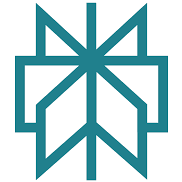Quick Answer:
The best Teespring alternatives in 2025 are Printful for quality and branding, Printify for affordability and variety, and Gelato for fast international shipping.
I’ve tested all of them, and each serves a different purpose depending on what you’re after.
Comparison Table: Teespring vs the Alternatives
| Platform | Base T-Shirt Cost | Shipping Speed | Branding Options | Integrations | Best For |
|---|---|---|---|---|---|
| Teespring | $10–12 | 2–3 weeks | None | Basic | Beginners with no store |
| Printful | $13.25 | 5–10 days | Full branding | Shopify, Etsy, more | Quality + brand control |
| Printify | $8–10 | 5–12 days | Limited | Shopify, Etsy, more | Price + flexibility |
| Gelato | $9–11 | 3–7 days (global) | Basic | Shopify, Etsy, more | International shipping |
| SPOD | $7.50–9 | 48 hours | Limited | Shopify, WooCommerce | Fast shipping |
| Redbubble | Varies | 2–3 weeks | None | Marketplace only | Passive income for artists |
| Zazzle | Varies | 1–2 weeks | None | Marketplace only | Creative product range |
| Teechip | $8–10 | 1–2 weeks | None | Basic | Test campaigns |
| Bonfire | $10–12 | 1–2 weeks | None | Fundraiser focused | Nonprofits + campaigns |
| Apliiq | $15+ | 1–2 weeks | Full branding | Shopify, Etsy | Premium apparel brands |
Why I Moved Away From Teespring
I used Teespring for years. It was the go-to when print-on-demand was just taking off. No upfront costs, built-in audience, easy setup — it sounded perfect. But after running dozens of campaigns and shipping thousands of products, I started seeing cracks.
Margins were thin. A t-shirt I sold for $24 would leave me with around $7 in profit — and that’s before ads.
And don’t get me started on customer complaints. Shipping delays. Print quality issues. Products arriving weeks late. All of it stacked up.
The final straw? No control over branding. I couldn’t include custom labels, branded packaging, or thank-you cards. Customers didn’t even remember my store — they remembered Teespring.
That’s not how you build a brand.
If you’re serious about POD in 2025, you need more control. You need real profit. You need to give your buyers a real experience — one that brings them back.
What Makes a Good Print on Demand Platform?
Not all POD platforms are built the same. Over the years, I’ve dialled in a simple checklist that helps me vet any provider. This list saves me time, money, and a lot of headaches. Here’s what I look for:
- Profit Margins:
Can I make at least $10 per sale on a $25 shirt after all fees?
This is the first thing I calculate. If I’m only making $3 to $5 per sale, that barely covers ad spend, let alone profit. Some platforms charge more for shipping or add hidden fees, so always do a full breakdown before choosing. - Product Quality:
Is the print sharp? Do colors fade after a few washes?
A good-looking product that holds up in the wash will get you repeat buyers and good reviews. I always order samples first to judge the fabric, print technique, and packaging firsthand. - Shipping Speed:
Will my customers get their order in under 10 days?
Fast shipping makes a huge difference. Late deliveries can tank your reviews and refund rate. I look for partners who can deliver within a week in the US and under 10 days internationally. - Integrations:
Does it plug into Shopify, Etsy, WooCommerce, etc.?
If I can’t automate the fulfilment process, I won’t scale. Seamless integrations save time, reduce human error, and let me focus on marketing and growth. - Branding Options:
Can I add inside neck labels, branded packing slips, or custom packaging?
This is a deal-breaker for me. If I want customers to remember my brand (not just the platform), I need full branding options. This includes thank-you cards, return labels, and even custom embroidery when needed.
To give you a clearer view, here’s a breakdown of what these features typically look like across top POD platforms:
| Feature | Printful | Printify | Gelato | SPOD | Teespring |
|---|---|---|---|---|---|
| Profit Margins | Medium | High | Medium | High | Low |
| Product Quality | High | Variable | High | Good | Mixed |
| Shipping Speed | Fast | Medium | Fast | Very Fast | Slow |
| Shopify Integration | Yes | Yes | Yes | Yes | Basic |
| Branding Options | Full | Limited | Basic | Limited | None |
I also care about where the product is printed. If it’s made closer to my customer, it gets there faster and often cheaper. Gelato is great at this because they use local fulfilment centers worldwide.
Printify lets me choose the print provider based on location, which also helps.
When you’re just starting out, it’s tempting to pick a platform just because it’s “easy” or “free.” But the truth is, those choices come at a cost — usually to your margins, delivery times, or brand.
A great POD partner doesn’t just print. They help you build something worth remembering. One that scales with you instead of holding you back.
The Best Teespring Alternatives I’ve Used (and Recommend)
1. Printful: Premium Quality for Real Brand Builders

Printful is the platform I turn to when I want full control over how my products look, feel, and arrive at the customer’s doorstep. If you’re serious about building a brand — not just selling shirts — this is one of the best options out there.
The product quality is consistently high. I’ve personally ordered dozens of samples over the years, and the print clarity, fabric feel, and long-term durability hold up better than most.
Whether you’re selling on Shopify, Etsy, Amazon, or another marketplace, Printful makes it easy to plug in and start fulfilling orders.
One of the biggest advantages is branding control. You can add custom inside neck labels, branded packing slips, stickers, inserts, and even custom embroidery.
These touches make your business look professional from day one — not like a side hustle printed through a random third-party vendor.
Yes, the cost is higher. A Bella+Canvas 3001 shirt will run you about $13.25 plus shipping, which can bring the total to $16 or more depending on the destination.
But I still use it — and profit — because the customer experience leads to repeat sales and better reviews.
Pros
- Premium product quality that’s reliable across the board
- Custom branding options like labels, inserts, embroidery, and packaging
- Strong integrations with platforms like Shopify, Etsy, Amazon, and more
- Automatic fulfilment and shipping without any manual intervention
- In-house production in the US, Europe, and other regions for faster shipping
Cons
- Higher base costs compared to platforms like Printify or SPOD
- Smaller margins unless you price products above average
- Limited to their own fulfilment network — no third-party printers
- Not ideal for bulk discount pricing unless you’re doing high volume
Who’s It Best For?
Use Printful if you’re:
- Focused on building a long-term brand
- Selling premium apparel or accessories
- Running a Shopify, Etsy, or Amazon store with a focus on customer experience
- Willing to trade margin for quality and control
Avoid Printful if you’re:
- Testing multiple low-ticket niches and need volume over quality
- Working with a small ad budget where every dollar in margin counts
- Needing the lowest price point to compete on marketplaces
At a Glance: Printful Breakdown
| Feature | Detail |
|---|---|
| T-Shirt Base Cost | $13.25 (Bella+Canvas 3001) + shipping |
| Product Quality | High (Consistent across most products) |
| Shipping Speed | 5 to 10 days (US), faster in EU warehouses |
| Branding Options | Full (labels, packaging, inserts, embroidery) |
| Integrations | Shopify, Etsy, Amazon, WooCommerce, more |
| Customer Support | 24/7 with live chat and knowledge base |
Printful isn’t for everyone, but it’s the first platform I go to when I’m building a store that I want to feel like a real business.
The branding features alone give it a huge edge, and for customers who care about quality and presentation, it’s a clear winner.
2. Printify: Best for Variety and Lower Costs

Printify works differently from most other POD platforms. Instead of printing products themselves, they act as the middleman that connects you to dozens of third-party print providers around the world.
That opens up a lot more choice — in both products and pricing — which is why I use it when I need variety and margins.
One of the biggest advantages is price. I’ve had t-shirts printed for as little as $7.60 plus shipping, depending on the provider. That’s hard to beat.
The range of products is also massive — apparel, accessories, home decor, drinkware — even eco-friendly items and premium streetwear blanks.
But with that flexibility comes inconsistency. Since different print providers handle production, quality can vary. Some use better blanks, some ship faster, and others just don’t meet the mark.
That’s why I always recommend ordering samples from multiple providers before you lock one in. It’s a bit more work up front, but totally worth it.
If you’re scaling up, Printify Premium ($29/month) is a game changer. It gives you up to 20 percent off most base prices.
I’ve saved hundreds per month just from the discounts alone. You’ll make back the monthly fee fast if you’re moving more than 10 to 15 orders a week.
Pros
- Massive product variety across dozens of print providers
- Lowest base costs in the industry — great for higher margins
- Global fulfilment network means faster shipping options
- Integrates with Shopify, Etsy, WooCommerce, and more
- Premium plan offers real savings at scale
Cons
- Quality varies between providers — not all are equal
- No consistent branding across different vendors
- Limited packaging customisation compared to Printful or Apliiq
- Some providers have longer shipping times or limited regions
Who’s It Best For?
Use Printify if you’re:
- Focused on maximising profit margins
- Testing multiple niches or product types
- Running a volume-driven store on Etsy or Shopify
- Willing to sample and test providers before scaling
Avoid Printify if you’re:
- Trying to build a premium brand with strict quality control
- Needing full custom branding or packaging
- Expecting consistent quality across all product lines without testing
At a Glance: Printify Breakdown
| Feature | Detail |
|---|---|
| T-Shirt Base Cost | From $7.60 (varies by provider) |
| Product Quality | Varies — depends on chosen print partner |
| Shipping Speed | 5 to 12 days (region and provider dependent) |
| Branding Options | Limited (some white-label options only) |
| Integrations | Shopify, Etsy, WooCommerce, BigCommerce, more |
| Premium Plan | $29/month — up to 20% off product costs |
Printify is one of my go-to platforms when I’m building volume-based stores or running tests in new niches. The cost savings add up fast, especially with Premium.
Just be prepared to put in a little extra effort upfront to vet the providers — once you find your top ones, it can be a very profitable setup.
3. Gelato: The Smart Choice for International POD Shipping

If you’re selling to customers outside the US, Gelato is one of the most efficient platforms out there.
It prints locally in over 32 countries, which means faster delivery, fewer customs issues, and lower shipping costs — all without you lifting a finger.
This global fulfilment network has been a game changer for my international sales. I’ve had orders arrive in Germany in just three days — faster than some US-to-US deliveries with other platforms. That speed leads to better reviews, fewer refunds, and happier buyers.
The tradeoff? Gelato’s product catalogue is smaller than Printify or Printful. They focus on essentials: apparel, mugs, posters, stationery, and wall art.
You won’t find the same level of variety or niche product selection here, but the quality is reliable and fulfilment is consistent.
Integration is simple too. You can link Gelato with Shopify, Etsy, WooCommerce, Wix, and a few others.
I run Gelato on my Etsy store specifically to serve customers in the UK and EU, where the delivery experience is often better than platforms shipping from the US.
Pros
- Local production in 32+ countries means faster delivery worldwide
- Lower shipping fees and fewer customs delays for international buyers
- Reliable product quality and print consistency
- Smooth integrations with Shopify, Etsy, and other ecommerce platforms
- Eco-conscious printing model with lower emissions from local fulfilment
Cons
- Smaller product catalogue than Printify or Printful
- Limited customisation options (branding is minimal)
- No real control over print providers — the network is managed internally
- Higher base pricing than some volume-first platforms
Who’s It Best For?
Use Gelato if you’re:
- Selling heavily in Europe, Australia, Canada, or other non-US regions
- Looking for fast international delivery without paying DHL rates
- Running a Shopify or Etsy store with global traffic
- Focused on essentials like apparel, art prints, mugs, or wall decor
Avoid Gelato if you’re:
- Building a store that relies on custom branding or unboxing experience
- Needing access to niche products or fashion-specific SKUs
- Based solely in the US with no international customer base
At a Glance: Gelato Breakdown
| Feature | Detail |
|---|---|
| T-Shirt Base Cost | Around $10 to $13 (varies by location) |
| Product Quality | High — consistent across categories |
| Shipping Speed | 2 to 7 days (region-dependent) |
| Branding Options | Limited — basic white-labeling only |
| Integrations | Shopify, Etsy, WooCommerce, Wix, Squarespace |
| Standout Feature | Local fulfilment in 32+ countries |
Gelato is my go-to solution for global fulfilment. If you’re tired of long shipping times and high delivery costs to international buyers, this platform fixes that instantly.
Just don’t expect deep branding options or quirky product types — stick to the essentials, and it performs really well.
4. SPOD: The Fastest Shipping in Print on Demand
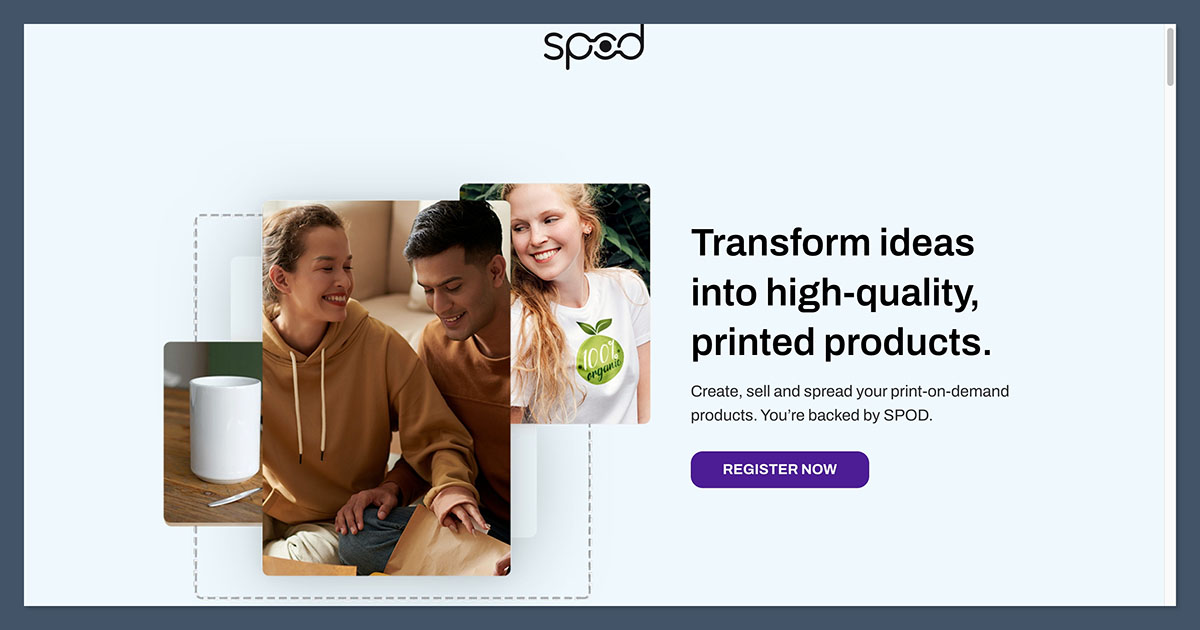
If you’re looking for raw fulfilment speed, SPOD is hard to beat. They claim that 95 percent of orders ship within 48 hours, and based on my experience, that’s accurate.
I’ve had orders go out same-day during weekdays — something you almost never see in print on demand.
SPOD is backed by Spreadshirt, so their fulfilment network is strong, especially in the US and Europe.
That speed makes it a great option if your audience is impatient or if you run time-sensitive promos where shipping delays would kill the offer.
What you gain in speed, you lose a bit in flexibility. The mockup tool is clunky, and the design placement options are more limited than platforms like Printful or Printify. You won’t find a huge range of unique products either — SPOD sticks to basics like tees, hoodies, mugs, and accessories.
But if you’re running ads and need fast delivery to avoid complaints and refunds, this platform gives you peace of mind. It’s all about speed and simplicity.
Pros
- Lightning-fast fulfilment — most orders ship within 48 hours
- US and EU production centres ensure reliable global coverage
- Lower shipping costs compared to other POD services
- Basic but solid product range (especially for apparel)
- Integrates easily with Shopify and WooCommerce
Cons
- Outdated mockup generator and limited design interface
- Minimal branding options — no custom labels or packaging
- Smaller product catalogue than Printify or Printful
- Less flexibility in design placement and preview tools
Who’s It Best For?
Use SPOD if you’re:
- Running Shopify or WooCommerce stores focused on speed
- Targeting customers in the US and EU
- Selling core products like shirts, hoodies, and mugs
- Prioritising fast fulfilment over deep customisation
Avoid SPOD if you’re:
- Building a brand that needs custom packaging or labels
- Designing detailed or placement-sensitive graphics
- Looking for fashion-forward or niche products
At a Glance: SPOD Breakdown
| Feature | Detail |
|---|---|
| T-Shirt Base Cost | Around $7.50 to $9.00 |
| Product Quality | Good — consistent for basics |
| Shipping Speed | 48 hours fulfilment, 2–6 day delivery window |
| Branding Options | Minimal — packing slips only |
| Integrations | Shopify, WooCommerce |
| Standout Feature | Fastest POD shipping in the industry |
SPOD isn’t trying to be the flashiest platform, and that’s okay. It’s built for speed, reliability, and simplicity.
When your customers care more about getting their product fast than fancy packaging or high-end mockups, this one gets the job done without delays.
5. Redbubble: Easy Passive Sales, But Low Control
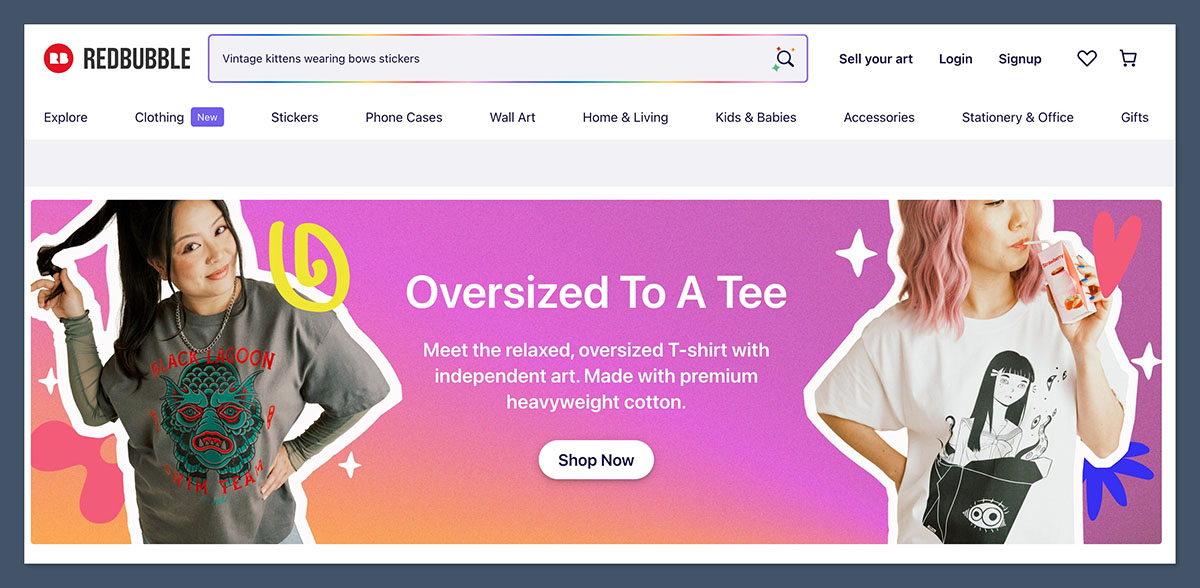
Redbubble isn’t your typical print-on-demand platform — it’s a marketplace. You upload your designs, set your markup, and Redbubble takes care of the rest.
They handle the printing, shipping, customer service, and even some of the marketing.
That hands-off setup makes it super beginner-friendly. You don’t need to run ads, build a website, or even manage orders. R
edbubble already has millions of monthly visitors, which means your work can start getting traffic right away — especially if you’re targeting popular niches or trending designs.
But here’s the catch: margins are thin. Redbubble sets the base price, and you earn a small percentage based on your markup. Most artists I know make somewhere between $1 and $5 per product, unless they price aggressively (which then kills conversion).
And since anyone can join, the competition is brutal, especially in saturated niches like t-shirts and stickers.
If you’re an artist, illustrator, or designer who just wants to upload and forget — no store setup, no customer service — Redbubble can bring in some passive income. Just don’t expect to build a brand or scale a business here.
Pros
- No setup required — just upload your art and go live
- Built-in traffic from millions of monthly visitors
- No fulfilment, shipping, or support responsibilities
- Large product range — apparel, stickers, wall art, home goods, and more
- Truly passive once designs are uploaded
Cons
- Low profit margins — limited pricing control
- High competition — crowded with similar designs
- No branding options — everything is shipped under Redbubble’s name
- No integration with your own store or ecommerce site
- Limited customer loyalty — buyers remember Redbubble, not you
Who’s It Best For?
Use Redbubble if you’re:
- An artist or illustrator looking for passive income
- Not interested in running a full ecommerce store
- Focused on art-driven products like prints, stickers, or patterns
- Wanting to test new design ideas without any upfront cost
Avoid Redbubble if you’re:
- Building a brand with custom packaging or repeat buyers
- Needing control over pricing and profit margins
- Trying to sell through Shopify, Etsy, or other storefronts
- Planning to run paid ads or grow a business
At a Glance: Redbubble Breakdown
| Feature | Detail |
|---|---|
| T-Shirt Base Cost | Set by Redbubble — low margins for sellers |
| Product Quality | Decent — varies by item |
| Shipping Speed | 7 to 15 days (region-dependent) |
| Branding Options | None — Redbubble branding only |
| Integrations | Marketplace only — no external integrations |
| Standout Feature | Built-in organic traffic for passive sales |
Redbubble is a solid option if you’re focused on hands-off income and don’t want to mess with the operational side of ecom.
But if you care about control, branding, or building a scalable POD business, it’s not the tool for the job.
6. Zazzle: Huge Product Variety, No Brand Control

Zazzle is another print-on-demand marketplace — not a platform you own.
Like Redbubble, you upload your designs, set your prices, and Zazzle handles the rest: printing, fulfilment, shipping, customer support.
Where Zazzle stands out is product range. We’re talking thousands of customisable items — from standard t-shirts and mugs to skateboards, puzzles, invitations, canvas prints, office gear, and even fabric. It’s one of the broadest product catalogues I’ve seen in POD.
This makes it a good place to experiment with niche product ideas or reach audiences shopping for personalised gifts, events, or one-off occasions.
And because Zazzle has decent search traffic, some creators get organic sales without marketing.
The downside? Same as Redbubble — you don’t own the customer. Every order is fulfilled under Zazzle’s brand, and there are no custom packaging or branding options.
You also face tight competition, and the interface is clunky at times.
Pros
- Massive product selection — from apparel to home decor, stationery, and gifts
- No upfront cost — start uploading designs immediately
- Exposure to Zazzle’s customer base for free organic sales
- Customisable product templates for deeper personalisation
- No shipping or fulfilment work on your end
Cons
- No branding control — everything ships under Zazzle’s name
- Margins are thin unless you price very high
- High competition with similar designs and copycats
- No external store integration — Zazzle controls the experience
- Outdated seller tools that feel clunky compared to newer platforms
Who’s It Best For?
Use Zazzle if you’re:
- A designer who wants to test a wide range of products
- Creating designs for events, invitations, or custom gifts
- Not interested in building your own brand or website
- Looking for passive income from a marketplace model
Avoid Zazzle if you’re:
- Focused on long-term brand building
- Needing custom packaging, thank-you cards, or repeat customer retention
- Planning to run ads or drive traffic to your own store
- Trying to create a high-end or premium ecommerce presence
At a Glance: Zazzle Breakdown
| Feature | Detail |
|---|---|
| T-Shirt Base Cost | Set by Zazzle — your profit depends on markup |
| Product Quality | Average — varies depending on product type |
| Shipping Speed | 5 to 14 days depending on region and item |
| Branding Options | None — Zazzle handles everything |
| Integrations | Marketplace only — no Shopify or Etsy support |
| Standout Feature | One of the largest product ranges in POD |
Zazzle gives you reach and range — but not control. It works well if you’re a designer who just wants to upload work, forget about fulfilment, and let marketplace traffic do the rest.
But for building a brand or ecommerce store that grows with you, it’s not built for that.
7. Teechip: A Simple Launchpad for Testing Niches
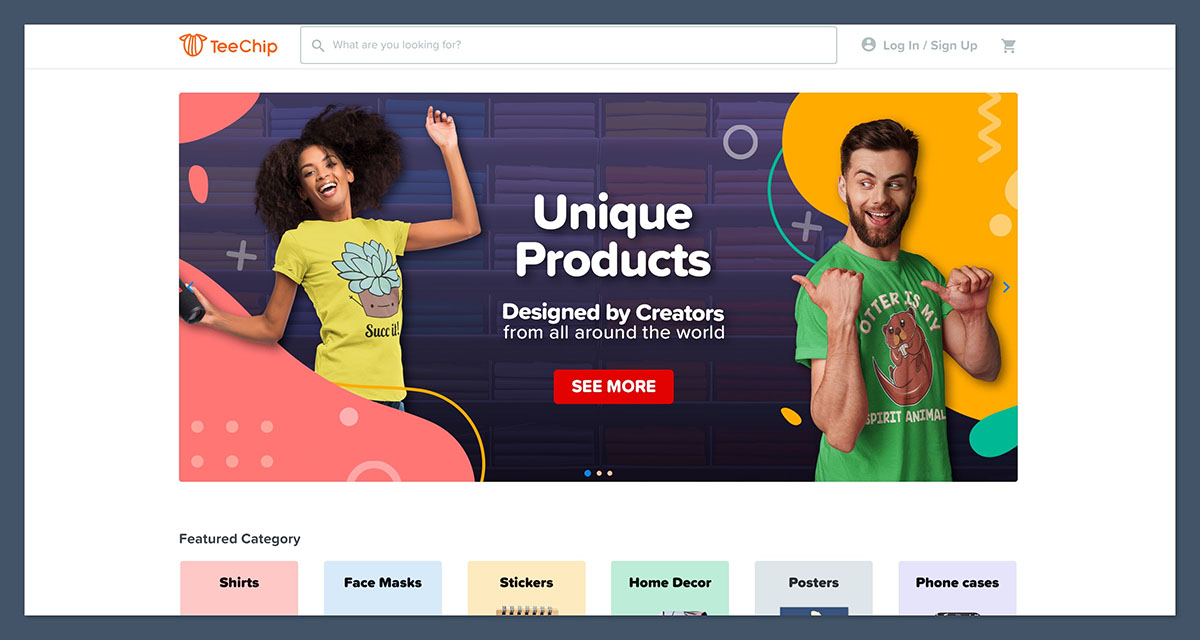
Teechip feels a lot like the early days of Teespring. It’s a no-frills platform where you upload your design, set the price, and let them handle everything from production to fulfilment.
The entire process is geared toward speed and simplicity — which is why some sellers still use it to test new product ideas quickly.
I’ve used Teechip when I wanted to throw up a quick offer or test a niche that didn’t need full branding or long-term infrastructure.
The setup is fast, and the margins can be solid — especially if you’re selling to US customers and pricing products around $24 or more.
That said, the platform has some rough edges. The backend is clunky, editing campaigns can be frustrating, and the support isn’t always reliable.
I’ve seen mixed reviews about delivery times and product quality, and while I haven’t had major issues myself, it’s enough to be cautious.
Still, if you’re just getting started, have a viral design, or want to test a specific audience fast, Teechip gets the job done. Just don’t expect high-end features, store integrations, or deep brand control.
Pros
- Easy to set up and launch a campaign quickly
- No upfront cost or subscription fees
- Decent product variety including apparel, mugs, posters, and phone cases
- Simple storefront system for sharing offers and landing pages
- Can be profitable if you keep fulfilment and ad costs low
Cons
- Clunky user interface makes setup and edits frustrating
- Inconsistent customer service based on user reviews
- Limited branding or packaging options
- No integrations with Shopify, Etsy, or major ecommerce platforms
- Trust issues due to past payment delays and mixed reputation
Who’s It Best For?
Use Teechip if you’re:
- Testing a new niche or trend without long-term commitment
- Launching quick campaigns around memes, holidays, or one-off ideas
- Looking for a low-risk way to validate a product
- Willing to accept limited control in exchange for speed
Avoid Teechip if you’re:
- Building a serious ecommerce brand
- Requiring reliable, scalable customer support
- Wanting custom branding or long-term repeat buyers
- Concerned about platform stability or reputation
At a Glance: Teechip Breakdown
| Feature | Detail |
|---|---|
| T-Shirt Base Cost | Around $8–10 depending on the item |
| Product Quality | Mixed — decent for simple designs |
| Shipping Speed | 7–14 days depending on location |
| Branding Options | None — no custom labels or inserts |
| Integrations | None — standalone platform only |
| Standout Feature | Good for fast, low-cost testing campaigns |
Teechip isn’t fancy. It’s not built for branding, long-term customer retention, or store integrations.
But for quick validation of ideas — or launching one-off products to a cold audience — it’s still useful in the right hands. Just keep your expectations realistic, and test small before scaling.
8. Bonfire: Best for Fundraisers and Cause-Driven Campaigns
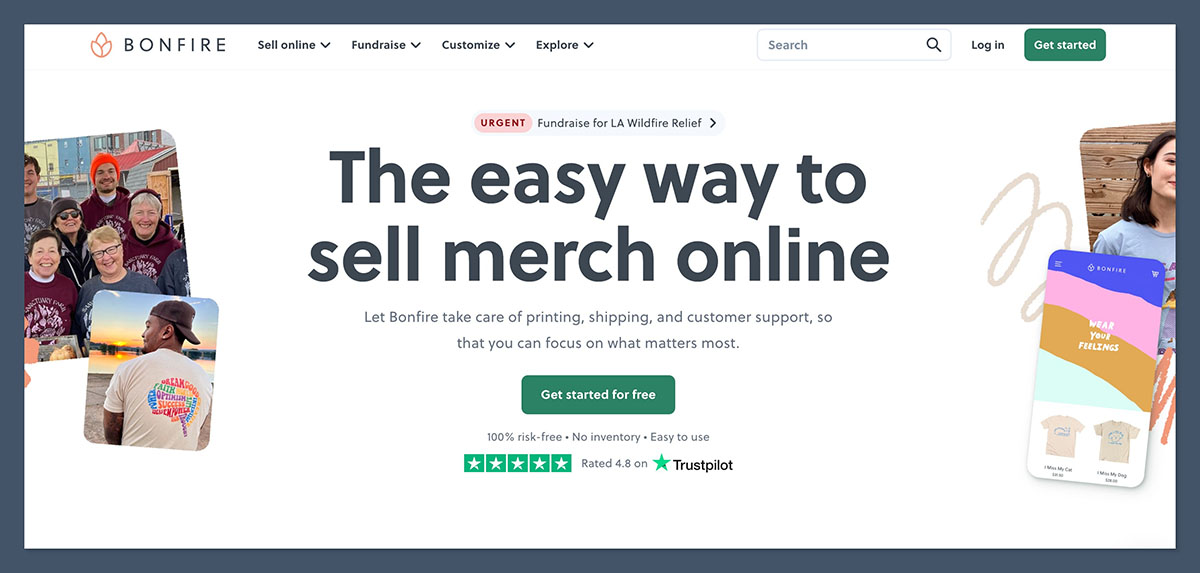
Bonfire is built for campaign-based selling, not long-term ecommerce. It’s a strong choice if you’re working with nonprofits, schools, clubs, or community projects.
The platform focuses on t-shirt fundraising, and it shows — everything from the setup to the messaging tools is tailored around getting people to rally behind a cause.
Setting up a campaign is simple. You upload a design, choose your products, and set a price. Bonfire handles printing, shipping, and even payment distribution.
What makes it stand out is the support for fundraisers — their team helps with strategy, and the platform offers clear tools for donation tracking and supporter outreach.
That said, Bonfire isn’t made for running a traditional POD store. There’s no integration with Shopify or Etsy, no way to create a large product catalogue, and limited branding control. It’s focused on time-bound campaigns, not evergreen product lines.
If you’re running a school event, charity drive, or awareness campaign, Bonfire delivers on what matters most: easy setup, no upfront cost, and a system that’s built to support community-driven selling.
Pros
- No upfront costs — launch a campaign for free
- Easy campaign setup for non-technical users
- Great for fundraising and nonprofit outreach
- Support team available to help with strategy and campaign setup
- Solid product quality with focus on basics like t-shirts and hoodies
Cons
- Not designed for ecommerce stores or ongoing brands
- Limited product selection beyond core apparel
- No store integrations — can’t plug into Shopify, Etsy, or WooCommerce
- No custom branding — everything is fulfilled under Bonfire’s identity
- Profit margins are modest, especially if donation sharing is enabled
Who’s It Best For?
Use Bonfire if you’re:
- Running a fundraiser, nonprofit, or charity campaign
- Looking to launch a limited-time merch drop for an event or cause
- Needing a hands-off way to handle printing and fulfilment
- Wanting built-in tools for donations and outreach
Avoid Bonfire if you’re:
- Trying to build a POD brand or ecommerce business
- Needing product variety or long-term fulfilment options
- Expecting branding control or repeat customer experience
- Wanting to plug POD into your own store platform
At a Glance: Bonfire Breakdown
| Feature | Detail |
|---|---|
| T-Shirt Base Cost | $10–12 (varies by style and colour) |
| Product Quality | Good — focused on staple items |
| Shipping Speed | 7 to 14 days on average |
| Branding Options | None — fulfilled under Bonfire’s brand |
| Integrations | None — standalone campaign-based platform |
| Standout Feature | Designed specifically for fundraisers and causes |
Bonfire is ideal when you’re not trying to run a store, but want to make a strong impact in a short burst.
Whether you’re raising money for a cause or uniting a group around an event, it does the heavy lifting and makes the campaign look good. Just know it’s not built for ecommerce in the traditional sense.
9. Spreadshirt: Easy to Use, Built for Side Hustlers
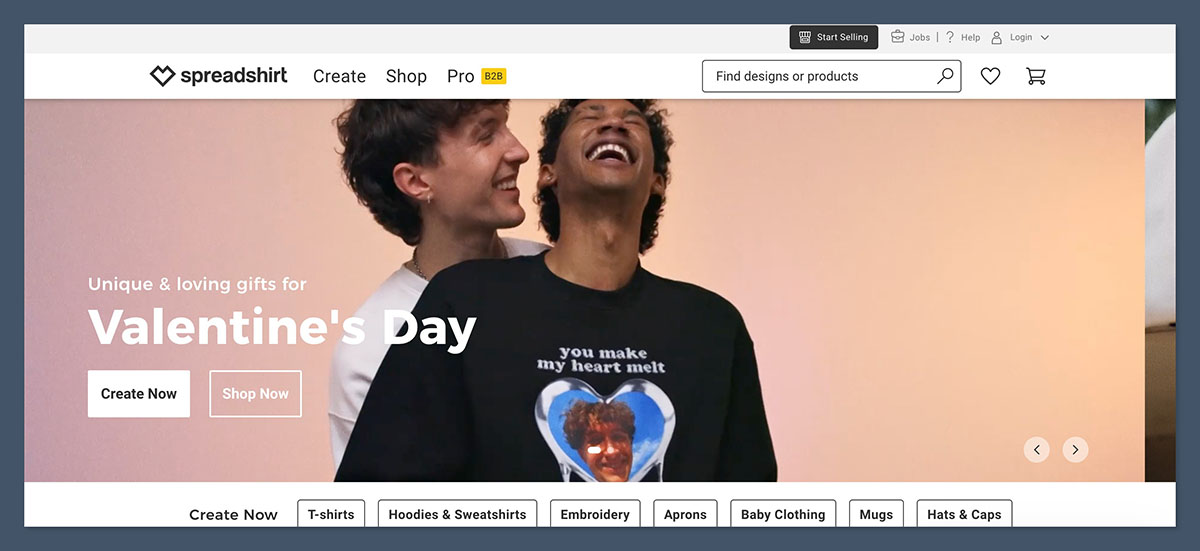
Spreadshirt is a hybrid between a marketplace and a print-on-demand storefront.
You can list your designs on their platform and tap into their traffic, or you can set up a Shop Partner storefront — a standalone site hosted by Spreadshirt — with a bit more flexibility and branding.
It’s one of the easier POD platforms to get started with. The setup is fast, the design upload tool is intuitive, and there’s no upfront cost.
You just upload, set your profit margin, and start selling. Spreadshirt handles the printing, shipping, and customer service.
Product quality is decent. Not as premium as Printful or Apliiq, but reliable enough for most casual apparel.
Shipping times are acceptable — not blazing fast like SPOD, but good enough for the US and EU.
The downside is that custom branding is minimal. Your store will still feel like part of Spreadshirt’s network.
And while there’s a marketplace, it’s not as active as Redbubble or Zazzle, so organic traffic is lower. That makes it harder to build serious volume unless you bring in your own customers.
If you want a low-effort way to make side income with basic merch, Spreadshirt is a safe, beginner-friendly option.
Pros
- Simple setup — get started without technical knowledge
- Two selling options: Marketplace or standalone storefront
- No upfront costs or subscription fees
- Decent product range with apparel, accessories, and custom gifts
- European fulfilment is strong if you’re targeting EU buyers
Cons
- Limited branding — no custom packaging or labels
- Basic design tool with less control than platforms like Printify
- Lower organic traffic than Redbubble or Zazzle
- Margins can be thin if you don’t adjust pricing
- Not ideal for scaling or long-term brand building
Who’s It Best For?
Use Spreadshirt if you’re:
- Looking for a low-effort, no-cost POD side hustle
- Wanting to test simple designs in apparel or accessories
- Selling in Europe or the US without needing deep branding
- Not ready to commit to running a full ecommerce store
Avoid Spreadshirt if you’re:
- Building a premium or branded product line
- Wanting to run ads or drive large traffic volumes
- Needing high margins or custom packaging
- Looking for tight integration with Shopify or WooCommerce
At a Glance: Spreadshirt Breakdown
| Feature | Detail |
|---|---|
| T-Shirt Base Cost | Varies — average around $10–12 |
| Product Quality | Decent — mid-tier apparel and accessories |
| Shipping Speed | 7 to 12 days depending on region |
| Branding Options | Minimal — some storefront customisation only |
| Integrations | None — use Marketplace or Spreadshirt-hosted store |
| Standout Feature | Dual selling model: Marketplace + Partner Shop |
Spreadshirt sits somewhere in the middle of POD platforms. It’s not as flexible as Printify, not as brand-focused as Printful, and not as passive as Redbubble.
But for creators who want a simple way to sell designs without managing their own site, it works.
10. Apliiq: Full Branding Control for Premium Streetwear
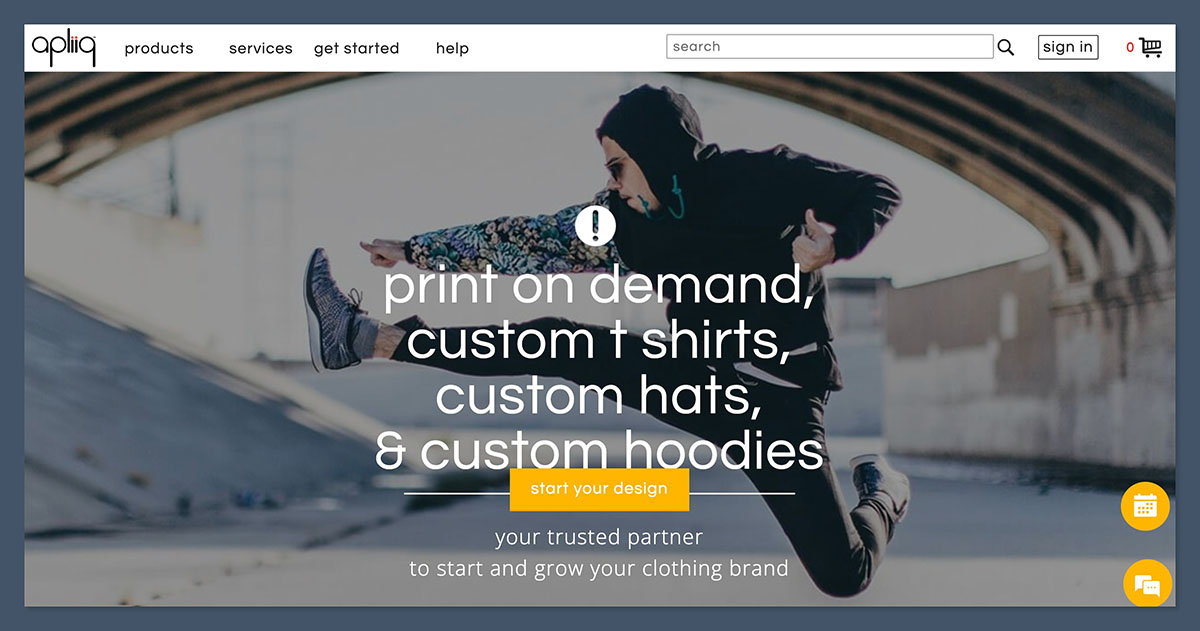
Apliiq is built for creators who want complete control over how their clothing looks and feels — not just the design printed on it.
It’s the only print-on-demand platform offering cut-and-sew customisation, private labelling, woven labels, embroidery, and even custom fabric applications.
If you’re serious about launching a streetwear or fashion brand, this is one of the few platforms that actually lets you do it right.
Unlike standard POD platforms that just print your design on a blank shirt, Apliiq lets you create unique, high-end apparel pieces.
You can choose where labels are sewn, add embroidered logos, and even have products folded, bagged, and tagged with your own branding. These touches are crucial if you want to build something that stands out in fashion or lifestyle niches.
The trade-off is price. A custom-labelled t-shirt will easily run you $15 to $20 or more, before shipping. This isn’t for beginners chasing $5 profit margins.
But if your pricing strategy supports premium positioning — $40+ tees, $60+ hoodies — the quality, presentation, and brand legitimacy are worth the cost.
It integrates with Shopify and Etsy, but keep in mind Apliiq is slower than platforms like SPOD or Gelato. This is fashion-grade fulfilment, not same-day shipping.
Pros
- Real cut-and-sew options — not just print-on-blanks
- Woven and printed labels, plus full embroidery options
- Folding, bagging, and tagging services for pro presentation
- Build a legit clothing brand that feels like a designer line
- Integrates with Shopify and Etsy
Cons
- Higher base prices — especially for customised orders
- Longer fulfilment times — due to manual labour and sewing
- Smaller product range focused mainly on apparel
- Not ideal for beginners or low-ticket niches
- Limited international shipping speed
Who’s It Best For?
Use Apliiq if you’re:
- Building a streetwear or lifestyle brand that needs full branding control
- Focused on high-ticket fashion items with strong margins
- Selling to customers who care about design, labels, and packaging
- Running a Shopify or Etsy store with a premium audience
Avoid Apliiq if you’re:
- Trying to sell cheap designs at scale
- Needing fast delivery or fulfilment under 3 days
- Just testing niche ideas or trying out print-on-demand
- Expecting plug-and-play simplicity like Redbubble or Printify
At a Glance: Apliiq Breakdown
| Feature | Detail |
|---|---|
| T-Shirt Base Cost | $15 to $22 depending on branding and extras |
| Product Quality | High — fashion-grade materials and finishes |
| Shipping Speed | 7 to 14 days — longer for branded/custom garments |
| Branding Options | Full — woven labels, embroidery, packaging, sewn tags |
| Integrations | Shopify, Etsy |
| Standout Feature | Only POD platform with cut-and-sew customisation |
Apliiq is in a league of its own. If you’re trying to build something that doesn’t look like everyone else’s dropshipping POD store, this is where you go.
The price is higher, but so is the customer perception — and the brand value you’re building long-term.
How to Choose the Right Platform for You
There’s no one-size-fits-all in print on demand. The best platform really depends on what you’re trying to build — and how much control you want over the product, the branding, and the customer experience.
Here’s how I recommend breaking it down:
- Are you building a brand?
You’ll need full control over packaging, labels, and overall product feel. Go with Printful for reliability or Apliiq if you want full-scale branding with cut-and-sew. - Just want to test a niche?
You need speed and low costs. Use Printify or Teechip to throw up offers, test designs, and validate ideas without much setup. - Selling worldwide?
Choose a platform that prints close to your customer. Gelato is built for this, with fulfilment in over 30 countries — fewer customs issues, faster delivery. - Need speed?
Fast shipping can reduce refunds and boost customer reviews. SPOD consistently delivers within 48 hours, which is rare in POD. - Prefer built-in traffic or passive sales?
If you don’t want to manage a store, try Redbubble or Zazzle. They’re marketplaces, so your designs can get discovered by their customers.
Each platform fits a different use case. Your job is to match your goals to the right tool — whether it’s low risk, global reach, fast fulfilment, or full creative control.
Quick Platform Selection Guide
| Your Goal | Recommended Platform(s) | Why It Works |
|---|---|---|
| Build a premium brand | Printful, Apliiq | Full control over branding, quality, and design |
| Test ideas or run quick offers | Printify, Teechip | Low cost, simple setup, fast testing |
| Serve international customers | Gelato | Local production in 30+ countries |
| Fastest shipping | SPOD | 95% of orders ship within 48 hours |
| Passive marketplace sales | Redbubble, Zazzle | No store needed, access to built-in traffic |
Final Tip Before You Commit
My advice: Test at least two platforms side by side. Order samples, check print quality, shipping times, packaging, and customer service. You’ll quickly see who delivers and who doesn’t.
What works for one niche or audience might fail in another.
Once you know the strengths of each platform, you can mix and match — use Printful for branded core products and Printify for high-volume testing. That combo has worked well for me and a lot of other sellers scaling without losing quality.
My Setup: What I Use Now (And Why)
Right now, I run multiple stores across different platforms. This isn’t just to stay organised — it’s how I balance quality, speed, profit margins, and customer reach.
Each platform plays a specific role in my overall strategy, depending on what I’m selling and who I’m selling to.
Some platforms give me full branding control. Others help me test quickly without risking too much capital. And then there are the ones I treat like passive side channels that bring in a little extra without extra effort.
Here’s how I’ve structured things today:
Breakdown of My Current POD Stack
- Shopify Store #1: Powered by Printful
This is my main brand store. Every product here is fully branded — inside neck labels, thank-you cards, even custom embroidery. I price products at a premium ($38 to $60 range), so I need everything to feel high-end. The margins are lower, but the repeat purchase rate and customer satisfaction make up for it. - Shopify Store #2: Uses Printify
This is more of a volume-focused, evergreen niche store. Tees are priced competitively ($21.99 to $24.99), and I use Printify Premium for better margins. I’ve tested different print providers and now stick with the top 2 for consistency. This store thrives on SEO and organic traffic, with occasional paid campaigns. - Etsy Store: Connected to Gelato
This store focuses on art prints, mugs, and a few apparel pieces. The audience is mostly European, so Gelato’s local fulfilment in the UK, Germany, and Spain helps with shipping speed and cost. It’s lower maintenance but still brings in reliable sales, especially around gift-buying seasons. - Redbubble Profile:
I treat this one as passive income. I upload artwork, optimise titles and tags, and let Redbubble’s marketplace traffic do its thing. No ads, no support to handle, and no fulfilment headaches. It’s not a huge revenue driver, but it pays for itself every month.
Why I Use This Stack
This setup gives me:
- Control over brand quality where it matters most (Printful)
- Testing power and higher margins at scale (Printify)
- Fast international shipping with less overhead (Gelato)
- Low-effort exposure through passive marketplace sales (Redbubble)
I don’t rely on just one provider. Instead, I lean into each one’s strength depending on the goal of the product and the audience buying it.
At a Glance: My POD Platform Use Case
| Platform | Purpose | Why It Works |
|---|---|---|
| Printful | Branded premium Shopify store | High quality, full control over packaging and labels |
| Printify | High-volume, low-cost Shopify store | Best margins for volume; lots of supplier flexibility |
| Gelato | Etsy store with EU customers | Faster fulfilment and lower shipping costs in Europe |
| Redbubble | Passive art-based revenue | Built-in traffic, no customer service or fulfilment hassle |
Always Be Testing
And yes, I still test new platforms every few months. Sometimes it’s to try out new product types, sometimes just to compare speed or pricing changes.
POD platforms update often — what worked two years ago might not cut it today. When margins are tight, that extra 5 percent in savings or speed really counts.
This multi-platform setup takes more planning, but it keeps my stores agile and profitable. It also makes sure I’m never relying too heavily on one platform to carry the whole business.
Final Thoughts
Teespring had its time. It was the entry point for a lot of us. But the game has changed. If you’re serious about building a real, sustainable print-on-demand business, it’s time to graduate from platforms that limit your profit, branding, and growth.
The right platform isn’t just about lower base costs — it’s about control.
Control over product quality, customer experience, fulfilment speed, and brand presentation. That’s what separates someone casually uploading designs from someone building a business people come back to.
Here’s what I’ve learned after testing nearly every major POD platform out there:
- No single provider does everything perfectly.
- Some win on branding, others on speed, and some on margins.
- Matching the platform to the goal of each store or campaign is key.
- The sellers who scale are the ones who test, adapt, and diversify.
What To Do Next
- Pick 2 or 3 platforms based on what fits your goals.
- Order samples to compare quality, fulfilment time, and packaging.
- Track your margins, refunds, and reviews — the numbers won’t lie.
- Focus on what’s working, and then double down.
I’ve built multiple six-figure POD brands using this exact approach — by mixing platforms, testing fast, and choosing based on strategy, not hype.
Whether you’re in it for passive sales, brand building, or launching something premium, there’s a platform that fits.
You just have to match the right tool to the right job — and then go all in on what works.


